#Travel Tales: A Glimpse into Gujarat’s Ancient City of Lost Glories, Champaner-Pavagadh
Sprawled across the descending plateau of the Pavagadh hill, the Champaner-Pavagadh Archeological Park creates a stunning visual landscape of natural and man-made environments. Here is all you need to know about this spectacular UNESCO World Heritage site.
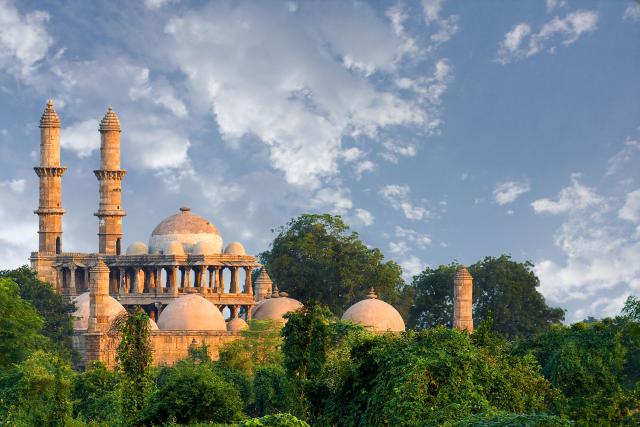
In the Panchmahal district of Gujarat, 47 km from Vadodara, lies the spectacular UNESCO World Heritage Site of Champaner-Pavagadh. Once the flourishing capital of an influential sultanate and an important trading post, medieval Champaner grew and developed at the base of the towering Pavagadh Hill, an 800-meter-high volcanic-origin peak that remains a pilgrimage site to this day.
Champaner-Pavagadh was deserted after the Mughals shifted their capital to Ahmedabad and over the years, this vast territory was gradually lost under dense forest cover. Archaeological activity in the last 50 years has rediscovered the city and excavations have already yielded 39 standing monuments that are a beautiful confluence of Hindu, Jain and Islamic architectural styles.
Sprawled across the descending plateau of the Pavagadh hill, the Champaner-Pavagadh Archeological Park creates a stunning visual landscape of natural and man-made environments.

Photo Source
For those seeking an offbeat weekend getaway with a blend of history and adventure, and a dash of spirituality and heritage, a 60-minute drive from Vadodara to Champaner-Pavagadh is the right choice.
The city of Champaner was founded by the Rajput King Vanraj Chavda of the Chavda Kingdom in the 8th century. The neighbouring town of Pavagadh was a key strategic point on the trade routes emanating from Gujarat and thereon spreading across India. The increasing glory of the small towns lured invaders to Champaner and Pavagadh. Many rulers attempted to capture them but only Mahmud Begda succeeded in doing so in 1484, after a siege of nearly two years.
After his victory, Sultan Mahmud Begada turned Champaner, at the base of the Pavagadh hill, into a splendid new capital. But its glory was brief; in 1535, the city was captured by Mughal ruler Humayun, who made Ahmedabad the capital city again in order to control Gujarat. This marked the start of the decline of Champaner, which slowly fell to ruin.
As visitors approach the Champaner-Pavagadh Archaeological Park, they are greeted by the scenic attractions of Jambughoda Wildlife Sanctuary before the sight of the serene Pavagadh hill, standing tall amid the plains, gives them the first hint of the surprises that await them at the Park.
You May Also Like: Guardians of Gir: This All-Female Wildlife Rescue Team Is Unlike Any in the World
A concentration of exquisite archaeological, historic and cultural monuments cradled in an impressive landscape, the ruins of Champaner have a story to tell.
The heart of this historic site is the Citadel, whose most impressive features are its monumental mosques that beautifully blend Islamic and Hindu decoration styles.
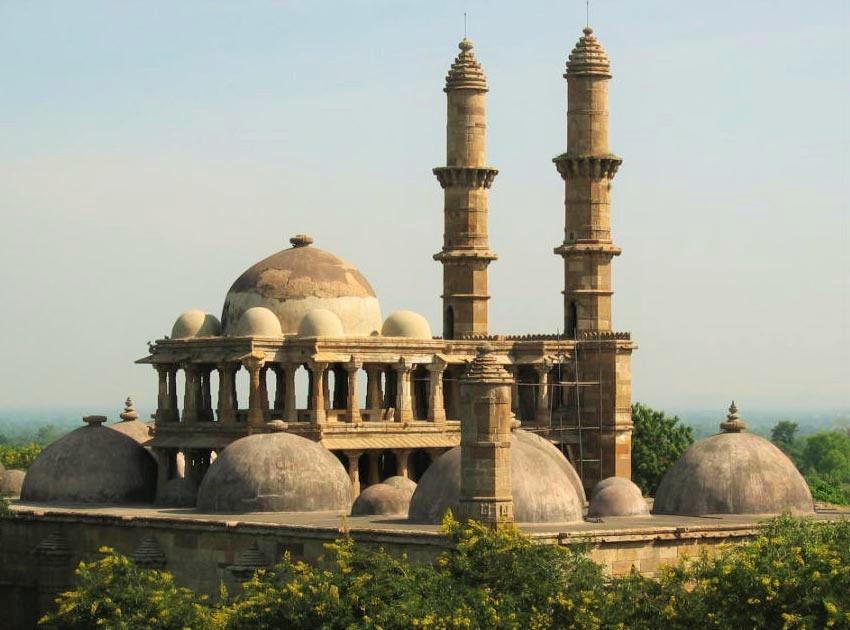
Photo Source
The huge Jami Masjid , just outside the Citadel’s east gate, is a mosque that seems to have frozen in time. It has a wonderful carved entrance porch (with a missing dome) that leads into a lovely courtyard surrounded by a pillared corridor. The grave of a little known saint rests here in solitude, surrounded by flowers brought by visitors as homage.
The prayer hall has intricate stone carvings, multiple domes, latticed windows, and seven mihrabs (prayer niches), along with two 30 metre tall central minarets that can be seen from quite a distance.

Photo Source
Evidence of the blend of Persian and Indian styles of decor is found in the form of the kalash (a Hindu religious symbol) engraved on the mihrabs.
The other stunning mosques at this Archaeological Survey of India (ASI)-protected site include the Saher ki Masjid (the private mosque for the royal family), the Kevda Masjid (with a two storey prayer hall and minarets with a spectacular view), the Nagina Masjid (with no minarets but exquisite geometric carvings), Lila Gumbaj ki Masjid (with a fluted central dome), and Minar ki Masjid (a rare brick tomb with twin minarets that resemble factory chimneys).
With the shimmering rays of the sun lending a golden hue to the sandstone, and the azure sky providing a pleasing contrast, all the mosques are a spectacular sight to behold.
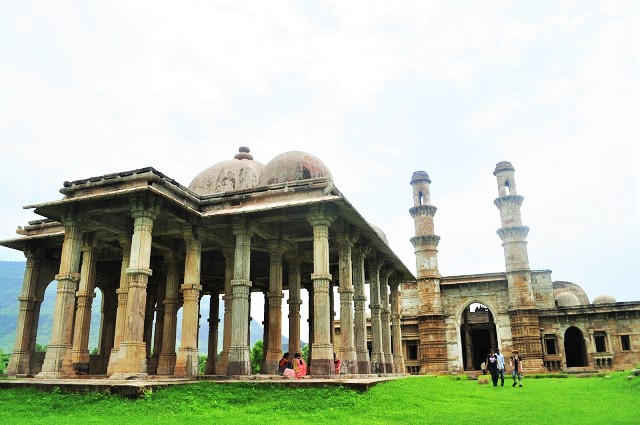
Photo Source
From here one can climb uphill, drive or take the ropeway to reach the Kalika Mata temple atop Pavagadh hill.
Perched on a cliff, the Kalika Mata temple attracts lakhs of devotees every year and is especially beautiful during the monsoon season.

Photo Source
The presiding deity of this temple is Goddess Kalika Mata, who is portrayed and worshipped in the form of a red coloured head called the mukhwato. The two other main deities are Goddess Kali and Goddess Bahucharamata. An interesting legend about the town says that Baiju Bawra, the renowned 16th century music maestro and Tansen’s contemporary rival, belonged to Champaner and Goddess Kali had blessed him with his beautiful voice after he was born mute.
A mud path on the Pavagadh hill leads to the fascinating Saat Kamman (Seven Arches). However, after one arch was demolished by natural elements, there are only 6 arches that remain now.
Blocks of perfectly chipped yellow sandstone fit tightly into each other (no cement or similar binding material was ever used) to form these amazing arches, which are all that remains of what was perhaps a mosque.
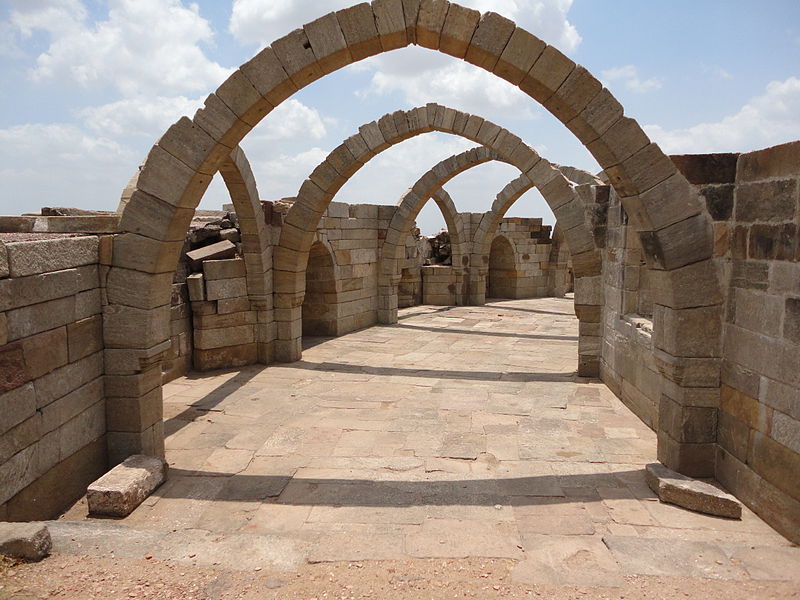
Photo Source
Yet another attraction is the Kabootar Khana or the House of Pigeons. The summer pavilion of the kings of Champaner, it overlooks a beautiful lake called Vada Talao – the source of the cool breeze that blows through the ancient bird-free roost. The water-wise Mahmud created narrow ledges at the base of the slopes to contain downhill streams, leading to interconnected lakes and finally to the large Vada Talao in the plains.
Another interesting experience here is a walk through dry riverbeds to the Jand Hanuman temple deep in the forest.

Photo Source
Locals believe that the Pandavas visited this place during their 13 years in exile and placed a big Hanuman idol here. It is also believed that Bheem made the idol while Arjun created a well using his arrow – a water source that never runs dry.
The nearby wildlife sanctuary in Jambughoda (a princely state prior to Independence) is home to magnificent forests of teak and bamboo that teem with wildlife. If lucky, one can even see leopards, sloth bears, jackals, blue bulls, wild boars, and four-horned antelopes, besides many varieties of reptiles. Migratory birds abound at the two beautiful water reservoirs in the sanctuary, Kada and Targol.
One thing that makes Champaner-Pavagadh stand out among many other ancient ruins of Indian cities is the adroit town planning here – the twin cities have over 36 ASI-protected sites, which include fortifications, palaces, religious buildings, residential precincts, cenotaphs, step wells, bastions, agricultural structures, and water facilities from the 8th to the 14th centuries.
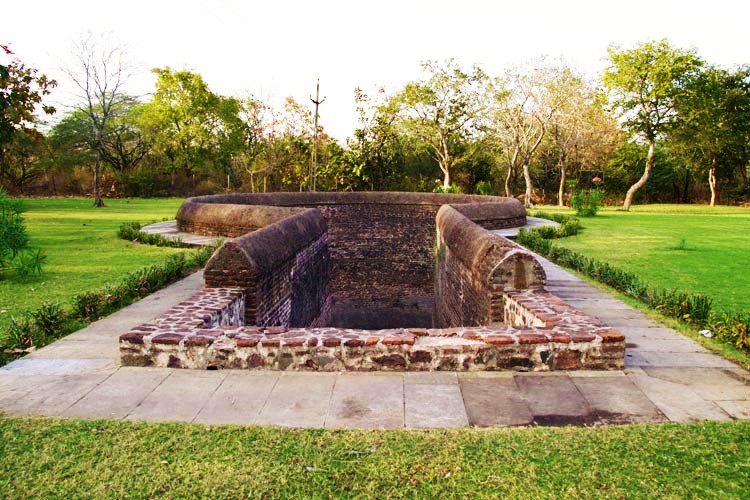
Photo Source
Buildings that served as military bases, storage houses and custom houses (mandiv) are still intact, while most of the big mosques have evidence of elaborate water harvesting structures (Hauz-i-Vazu) in their compounds. Interestingly, this site was also the fictional location for the Oscar-nominated film and mega hit of 2001, Lagaan.
The sleepy town, where cycles and bullock carts jitter through the narrow lanes behind crumbling fortifications, is a magnificent tribute to the architectural prowess of that era. The allure of Champaner-Pavagadh, an old, deserted yet still glorious town, still draws travellers from far and wide across India and abroad.
Where to Start: Shaher Ki Masjid is the starting point for your exploration. It is where you buy your ticket for Champaner-Pavagadh Archaeological Park. You are allowed to take your vehicle inside the archaeological park while exploring the ruins.
How To Reach: The nearest airport is in Vadodara. Although Champaner has a railway station, it is not well-connected. The Vadodara railway station would be a better option. Buses from Vadodara and Ahmedabad also leave frequently for Champaner.
Best Time To Visit: Winter (October to February).
Where To Stay: There are numerous options in Champaner, catering to different budgets.
Also Read: Modern India Can Learn a Lot from These 20 Traditional Water Conservation Systems
Like this story? Have something to share? Email: [email protected], or join us on Facebook and Twitter (@thebetterindia). To get positive news on WhatsApp, just send ‘Start’ to 090 2900 3600 via WhatsApp.
This story made me
- 97
- 121
- 89
- 167
Tell Us More
We bring stories straight from the heart of India, to inspire millions and create a wave of impact. Our positive movement is growing bigger everyday, and we would love for you to join it.
Please contribute whatever you can, every little penny helps our team in bringing you more stories that support dreams and spread hope.



















